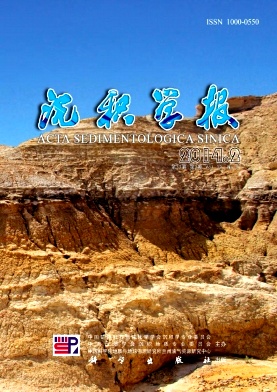“Dual feature” of Sequence Architecture and Sequence Evolution Model of Triassic Northern Tarim Basin
- Publish Date: 2014-04-10
-
Key words:
- Tarim Basin /
- Kuche depression /
- Northern Uplift of Tarim Basin /
- Triassic /
- Dual feature /
Abstract: Based on integrated investigation of outcrops, well logs and cores, the sequence stratigraphy framework of northern Tarim Basin was set up, and the sequence architecture of Triassic in outcrop of Kuche depression and Northern Uplift of Tarim Basin was studied. In each sequence, coarse grained lithosomic bodies such as alluvial fan, braided river and braided river delta are dominant in the lowstand systems tracts (LST), and the upper parts of the sequences are composed of fine grained lacustrine mudstone which are called lacustrine transgressive-highstand systems tracts (T-HST). Every single sequence is coarse in lower part and fine in the upper part. The special sequence architecture is mainly associated to episodic compressive movement of Tarim Basin in Triassic. At the beginning of the compression, the accommodation increases slowly, for the short distance from provenance to basin and sufficient sediment supply, the LSTs are mainly coarse sediments. The water became deeper with the intensified compressive force, then the fine-grained transgressive systems tracts (TST) are deposited. When the basin base was broken, lake water dropped down quickly, with little mudstone deposited as highstand systems tracts (HST). Finally, a sequence evolution model of Triassic in the northern Tarim Basin was proposed. In tectonic compression period, some coarse-grained lithosomic bodies such as fan delta, braided river delta were deposited; when the compressive force persisted and discharged in a short time, fine-grained lacustrine sediments deposited which were defined as T-HST as the upper parts of sequences. For the special dual feature of the sequences, the coarse-grained lower LSTs are suitable for reservoir, and the upper fine-grained T-HSTs could be the source or seal of the reservoir, so it is indicated that, besides the tectonic reservoir, the lithologic reservoir and lithologic-tectonic reservoir in the LSTs of each sequence are major exploration targets of Triassic in northern Tarim Basin.
| Citation: | “Dual feature” of Sequence Architecture and Sequence Evolution Model of Triassic Northern Tarim Basin[J]. Acta Sedimentologica Sinica, 2014, 32(2): 325-333. |






 DownLoad:
DownLoad: